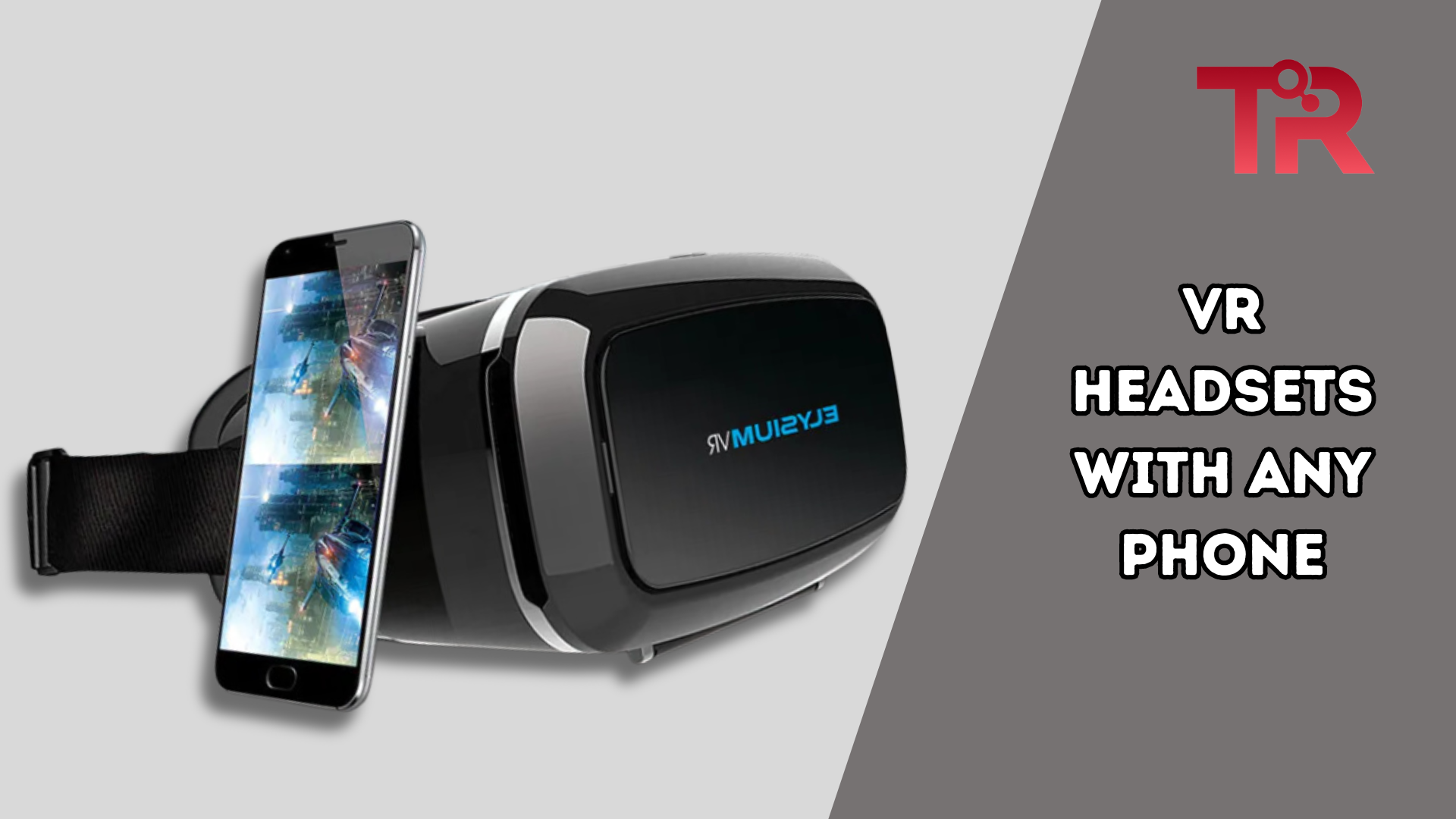Do VR Headsets work with any phone? This is probably the most common question VR enthusiasts ask before buying a smartphone for VR. Therefore, we have covered all the necessary information you need to know about phone-based VRs and how to check if your phone is compatible with VR headsets. Additionally, we have also compiled some best Mobile VR options for you. So, keep on scrolling the article.
Do VR Headsets Work With Any Phone?
No, virtual reality (VR) headsets typically do not work with any phone. VR headsets are designed to be compatible with specific types of phones, and there are different technologies and standards for VR depending on the headset.
There are primarily three types of VR headsets:
- PC-Connected VR Headsets: These high-end VR headsets need to be connected to a powerful computer to function. Examples include the Oculus Rift and HTC Vive. These headsets have their own display and sensors, and they don’t rely on a phone.
- Stand-Alone VR Headsets: These are self-contained devices that don’t require a separate computer or phone. Examples include the Oculus Quest and HTC Vive Focus. They have their own processing power, display, and sensors.
- Smartphone VR Headsets: These are simpler devices that use a smartphone as the display and processing unit. Examples include Google Cardboard and Samsung Gear VR. The phone is inserted into the headset, and the VR experience is powered by the phone’s screen and sensors.
Each of these types has specific requirements and compatibility. PC-connected VR headsets require a compatible gaming PC, stand-alone headsets are independent devices, and smartphone VR headsets rely on specific smartphones with compatible sensors and screen sizes.
Also Read about: Top 3 IOS Compatible VR headset
How To Check VR Compatibility?
To determine if your phone is compatible with virtual reality (VR), you’ll need to consider a few factors. The compatibility depends on the type of VR experience you’re looking for—whether it’s a smartphone VR headset, a stand-alone VR headset, or a PC-connected VR headset. Here’s a breakdown:
1. Smartphone VR Headsets (e.g., Google Cardboard, Samsung Gear VR):
- Operating System (OS): Make sure your phone’s operating system is compatible. Most VR apps are available for both Android and iOS, but you should verify compatibility.
- Sensors: Check if your phone has the necessary sensors for VR, such as a gyroscope and accelerometer. These sensors are crucial for tracking your head movements.
- Screen Size: Some VR headsets have specific requirements for the size of the smartphone screen. Ensure that your phone fits the recommended screen size.
- Connectivity: Verify that your phone can physically fit into the VR headset and that it supports the required connectivity (e.g., micro USB, USB-C, or lightning connector).
2. Stand-Alone VR Headsets (e.g., Oculus Quest, HTC Vive Focus):
- Compatibility Requirements: Stand-alone VR headsets typically have specific hardware and software requirements. Check the headset’s official website for a list of compatible devices.
3. PC-Connected VR Headsets (e.g., Oculus Rift, HTC Vive):
- PC Requirements: If you’re considering a PC-connected VR headset, your computer needs to meet certain specifications. Check the VR headset manufacturer’s website for the recommended PC specifications.
- Connection Type: Ensure that your phone has the correct ports or adapters for connecting to the VR headset, especially if you’re using a smartphone as a display.
General Tips:
Here are a few tips you should consider before buying a Phone-based VR headset.
- Check the VR apps you’re interested in on your phone’s app store. Most VR apps specify the compatible devices and operating systems in their descriptions.
- Visit the official websites of the VR headset and the smartphone to find detailed compatibility information.
- Look for user reviews and forums discussing VR compatibility with specific phone models. Other users’ experiences can provide valuable insights.
Best VR Headset Options For Phone
Below are a few most popular and best VR Headset options for phones.
Google Daydream:
- Compatible with select phones like Google Pixel, Samsung Galaxy, LG, Moto, Huawei, Asus, and ZTE.
- Requires a Daydream View headset (discontinued, limited stock).
- Well-built headset with a controller for VR experiences.
- Limited number of phones and uncertainty about ongoing software support.
Samsung Gear VR:
- Compatible with select Samsung phones (Galaxy S, Note, A series).
- Comes with a controller, well-built, and comfortable.
- Similar to Daydream, it has a high-quality headset.
- Over 1000 Gear VR apps and games, but support is winding down.
Google Cardboard:
- Designed for phones not supporting Gear VR or Daydream.
- Compatible with any Android 4.1+ phone and iPhones (iOS 8+).
- Requires a Cardboard viewer (varying quality and price).
- Affordable and accessible, supports a wide range of phones.
- Less quality in headsets and apps compared to Daydream and Gear VR.
- Fully supported, potential for a growing library of content.
iPhone VR:
- Google Cardboard is generally the best option for iPhone VR.
- Other VR headsets available for iPhone 5S and above.
- Cardboard-certified headsets recommended for a full VR experience.
Other Smartphone VR Solutions:
- LG, ZTE, and Huawei have their own VR headsets.
- Limited compatibility with specific devices (e.g., LG 360 VR with LG G5).
- Better built than most Cardboard headsets but not as competitive as Daydream or Gear VR.
- Limited content availability compared to major VR services.
Are VR Headsets or Phones Worth Buying?
The value of mobile VR depends on your needs and preferences. It’s often more affordable and convenient, making it a budget-friendly and portable option. Consider the available content and performance, as mobile VR relies on smartphone capabilities. High-end VR systems offer superior experiences with advanced tracking and greater freedom of movement. However, upgradability is limited in mobile VR compared to dedicated systems. Hopefully, future development and support from developers may favor high-end VR. Generally, mobile VR devices are affordable and portable for casual users, but you can opt for higher-end systems for high-fidelity VR experiences.
Conclusion
It’s essential to check the compatibility of the VR headset with your specific phone or device before purchasing one. Remember that technology is constantly evolving, so newer models may have different compatibility requirements.

